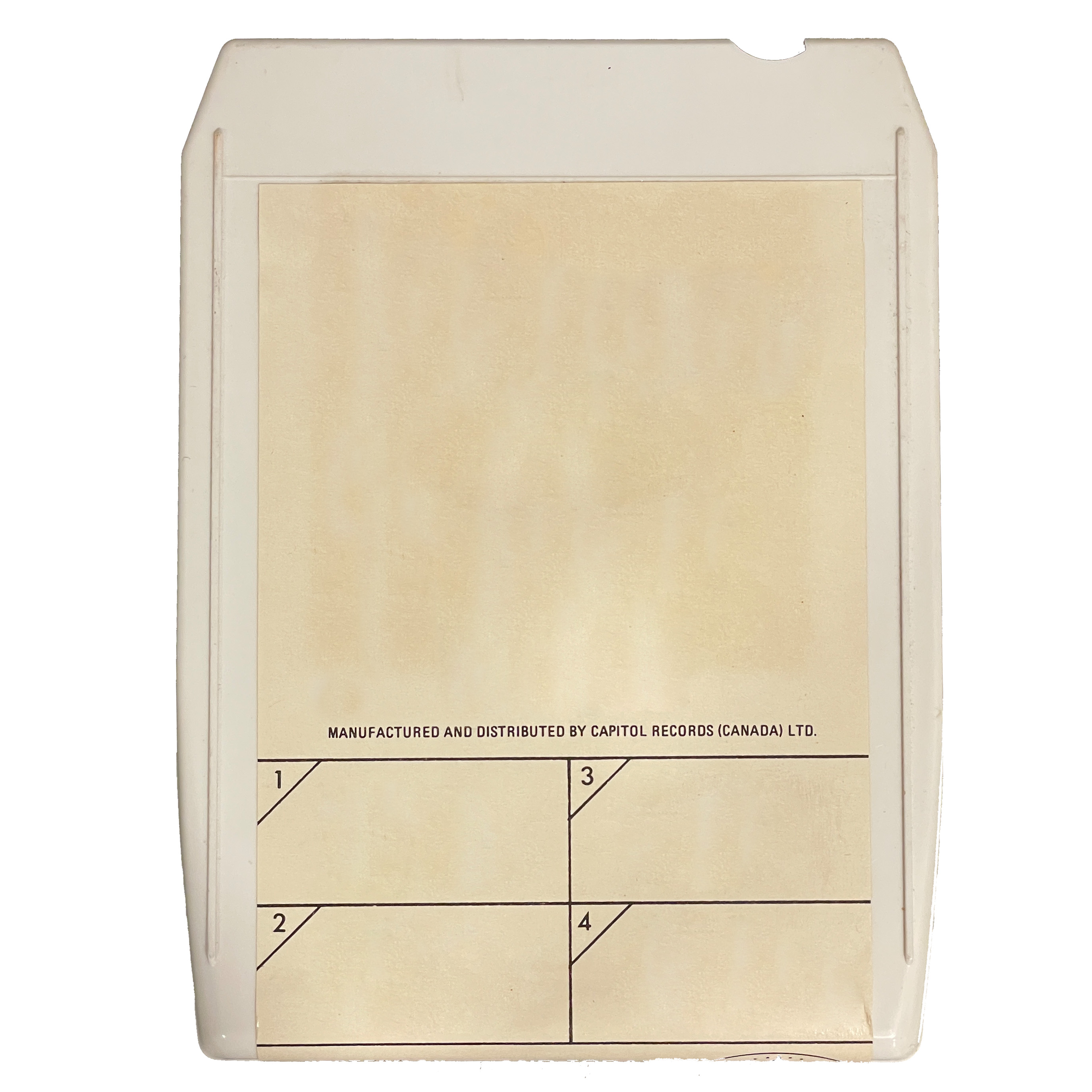
(1968-1970)
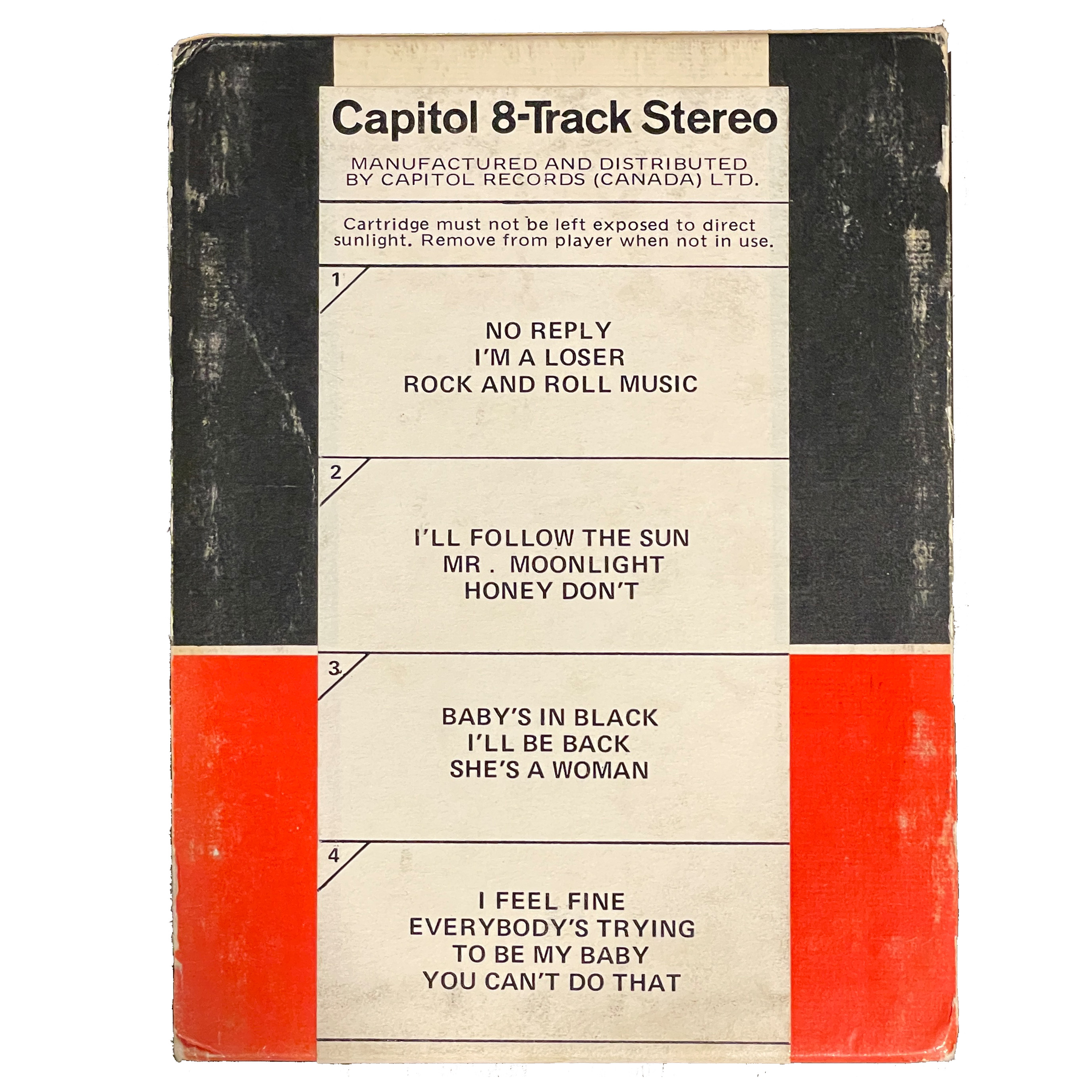
(1968-1970)

(1970-1971)
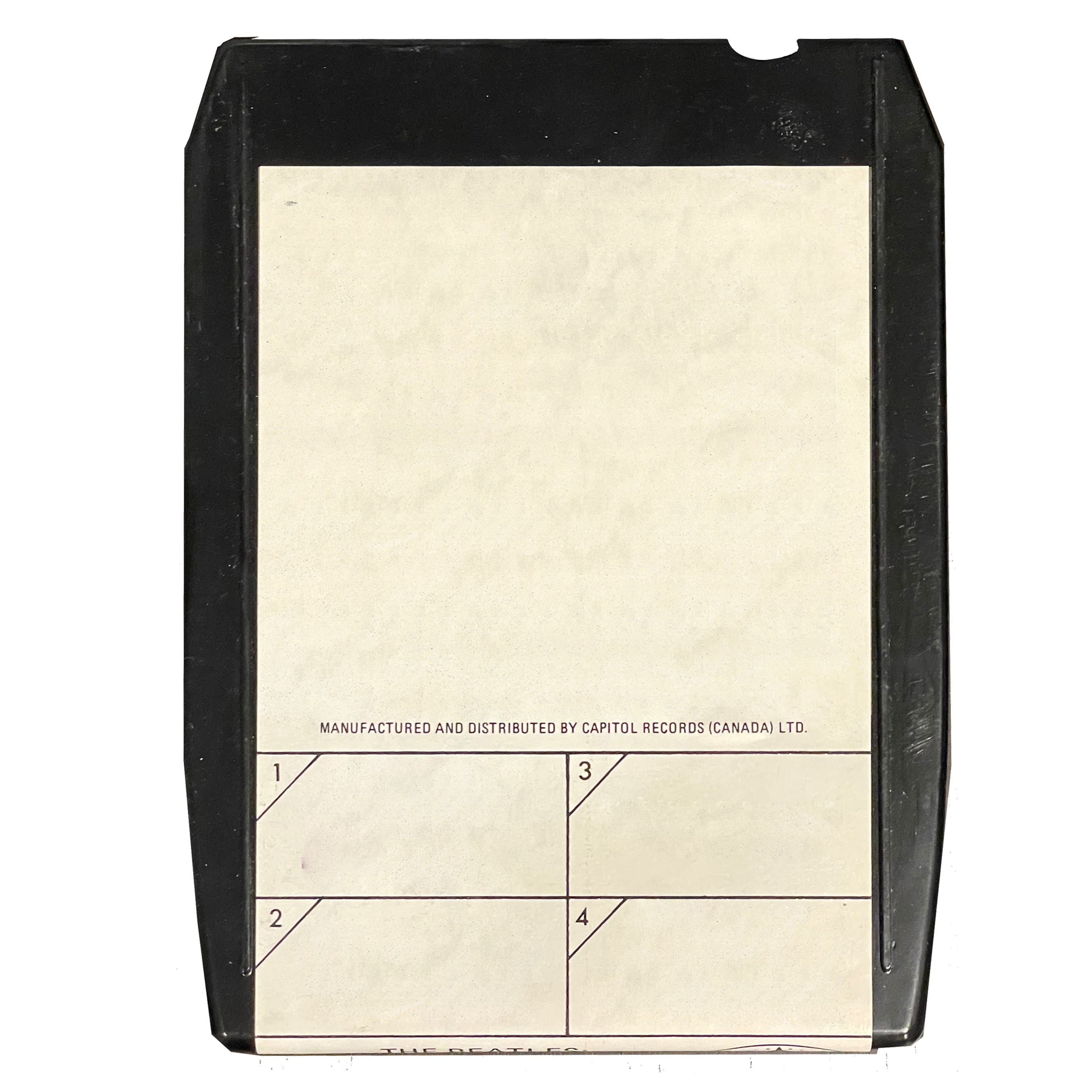
(1970-1971)
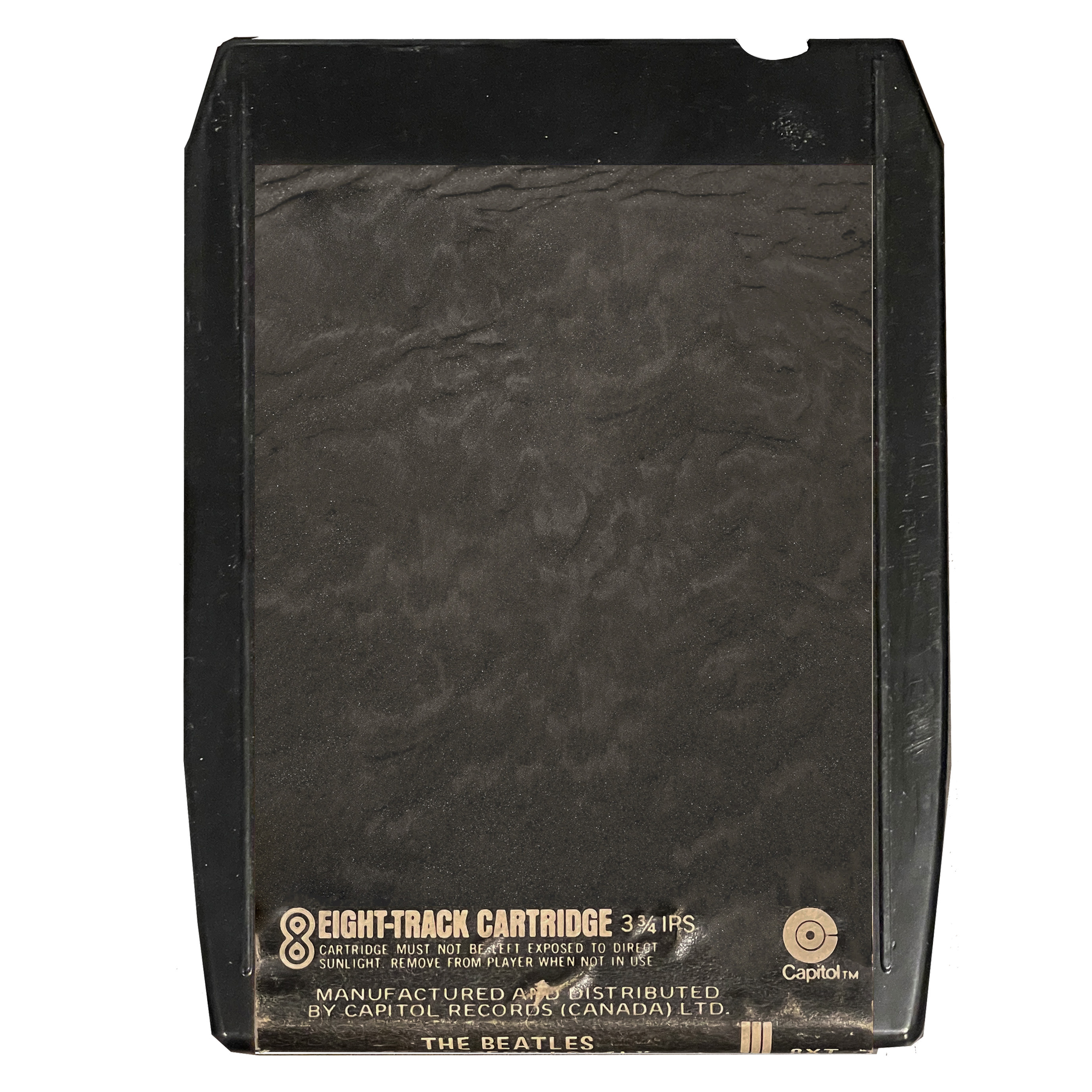
(1971-1973)
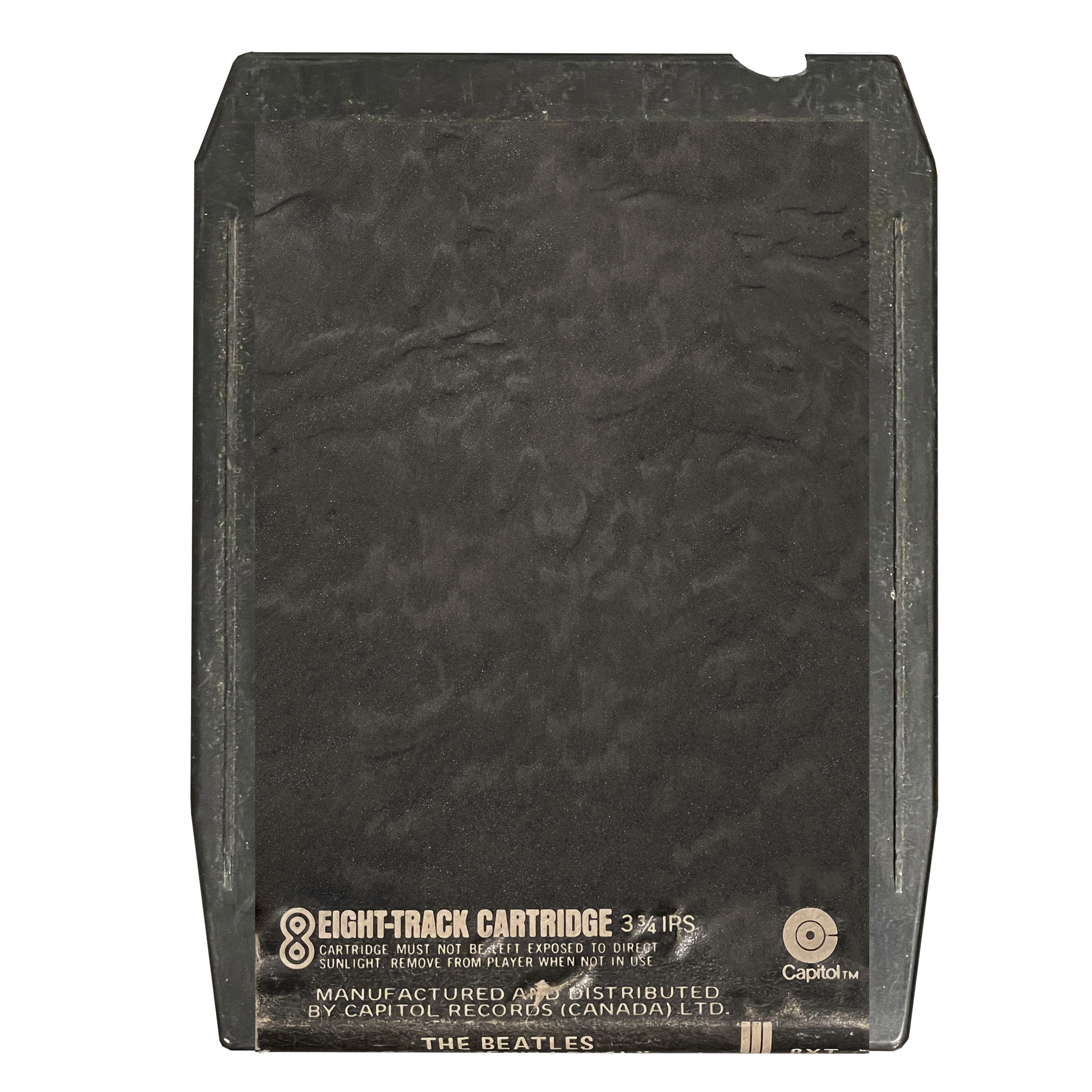
(1973-1976)

(1976-1982)
Capitol Records of Canada started to offer the 8-Track tape format in the fall of 1968. Early tapes (until 1971) were manufactured by Ampex (under their Datapack format), after which Capitol switched to other manufacturers. Early tapes had white shells, and between November 1968 and mid-1969, they were issued in a sideways red and black cardboard slip case that featured the tracklisting of the album; these are extremely hard to find today and are very collectable. Later 1970s and 1980s shells were black, but changed manufacturers a few times (Ampex Datapack, Lear Jet, Capitol). Hybrids or transition tapes can also be found, where older white slicks are used on a newer black Datapack shell, or the other way around (a black slick on a white Datapack shell).
Also of note, some tapes (mostly later mid-70s tapes) were found with US artwork on a Canadian shell. It is not known if all titles have been released in all variations, but it is assumed that most have been. The current archive pictures all confirmed variations, and will be updated over time, as new titles are discovered.
Finally, some rare two-album tapes exist in the USA (like the two-title reels), but Canadian "twofer 8-Tracks" have yet to be confirmed.
All in all, there appears to be five main series of 8-Track tapes produced in Canada, many of which have their "sub-variations":
1. White Datapack Shell
These first 8-Track tapes from November 1968-1970 features a white Ampex Datapack shell with a white Canadian paper slick (unlike the separate pink US slicks of the time). White shell tapes were housed with a unique red and black generic cardboard slip case onto which was glued a paper title sheet (see image 1SC below). These slip cases were dropped around the end of 1970 when black shell / black slick tapes were introduced.
2. Transitional Datapack (series A and B)
Around 1970, white shells were replaced by black Ampex Datapack shells with a black slick (see next entry), but early on, transitional copies can be found with a shell / slick mismatch (e.g., white shell / black slick (A); these have been found on releases between 1970-Let It Be and 1971-RAM), or a black shell / white slick (B))-namely on Help! and Pepper reissues. White slick tapes could have still been housed in a unique red and black generic cardboard slip case.
3. Black Datapack Shell
Around late 1970, white shells were replaced by black shells with a black slick. These used the same shell format (Ampex Datapack) but featured a different black slick design. These were used until late 1973 when Capitol changed manufacturers. Black slick tapes were now issued in a generic black Capitol / Apple slip case that features information in both French and English. The new slip cases were never used on white slick tapes. These new pressings were the first to use the new Capitol Target logo around 1970-1971.
4. Lear Jet Shell
Around Mid 1973, Capitol decided to subcontract Lear Jet to produce their 8-Track tape shells instead of Ampex, these have a slightly different grip angle, shorter lines on the top of the shell, and are marked "LearJet" in a larger recessed area on the back of the shell. These can be found with Canadian or US artwork slicks and were used until around 1976. US artwork slicks featured the old-style dome logo instead of the target logo from that period.
5. Capitol Shell
In mid 1976, Capitol of Canada was to become "self-sufficient" with their new manufacturing plant in Mississauga, and they also started to produce their own in-house shells. These black shells can be found with the Capitol target logo pressed into the plastic, and have a shorter grip than previous models.
Again, it is not known if all titles have been released in all these variations, but it is assumed that most have been. This archive pictures all confirmed variations, with new added titles as they are discovered. Please keep in mind that dating these might prove to be difficult, so most dates here are estimates. If you have information that can help detail, clarify or rectify this archive, please do contact us, as we would like to make this reference website as accurate as possible.
Information on dates and manufacturing information of early 8-Tracks presented above was developed by Piers Hemmingsen; for a detailed account of the 8-track story in Canada, please refer to Piers' book: The Beatles' Canadian Discography part 1.







Entries in this archive are numbered so you can easily refer to them when trying to organize your collection. A typical variation number would be presented in an Alpha Decimal format that sequentially identifies:
As an example, the Columbia pressing of the White Album featured on the 2nd generation orange label would be numbered LP.APP101.7.1 : in other words, the LP version of the Apple album number 101 (the White Album's catalogue number), on the 7th label type (The orange 2nd gen. label), and this is the first variation of this category.
Or, the Gold Box Series Reel to Reel release of Sgt Pepper's would be numbered RE.2653.2.1: in other words, the reel version of the title with catalogue number 2653 (Pepper), from the second series of reels (Gold Box), and this is the first variation of this category.
Finally, the last clear shell cassette issue of Abbey Road would be numbered K7.APP383.9.2: in other words, the cassette version of the Apple album numbered 383 title (Abbey Road), from the ninth series of tapes (Color Inlay XDR Clear Shell), and this is the second variation of this category.
...and so on.
This allows anyone who has learned the numbering system to identify with precision any variation, just from its ID number. This system does not replicate other numbering systems (e.g. Spizer, or Valiquette), but has been tailored to the structural logic of this archive. For detailed explanations of label variations and their relative numbers, visit the FORMATS page from the main menu.